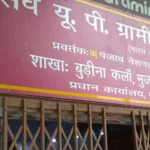New Delhi: US Treasury Secretary Scott Bessent described India-US relations as “very complicated” during a recent interview, expressing hope that both nations will find a resolution amid escalating tariff tensions. Despite fresh US tariffs doubling duties on Indian goods in retaliation for the country’s imports of Russian crude oil, Bessent remains optimistic about future negotiations between the two nations. He noted that while talks have stalled, the strong rapport between President Trump and Prime Minister Modi may pave the way for a favorable outcome.
Escalating Tariff Disputes
Tensions between the United States and India have intensified following the implementation of new tariffs aimed at Indian exports. On August 7, President Trump announced a reciprocal 25% levy on Indian goods, which was subsequently increased to 50%. This decision was largely influenced by India’s continued procurement of Russian crude, an issue that has drawn sharp criticism from Washington. Bessent highlighted the complexities involved, stating, “I think at the end of the day, we will come together.” He underscored the strong relationship shared between leaders Trump and Modi, suggesting that personal ties could lead to diplomatic solutions.
However, the window for dialogue is narrowing, as no significant agreement has emerged despite an open 21-day period for negotiations. Reflecting on the stalled talks, Bessent noted that there was a hope for a trade agreement earlier this year. “The Indians came in very early after Liberation Day to start negotiating on tariffs, and we still don’t have a deal,” he disclosed.
Protecting Domestic Industries
Amid these escalating tariff disputes, Prime Minister Modi remains steadfast in his commitment to protect Indian farmers, small-scale industries, and cattle-rearers. Modi has reiterated that the pressure from the US will not compel India to make concessions that could undermine these critical sectors. This resolve is telling of India’s approach in navigating such complex international waters—prioritizing domestic interests while attempting to maintain diplomatic relations with a major economic partner.
Consider a small farmer from Punjab relying heavily on government support for crops. His livelihood could be significantly affected if imported goods flood the market due to lowered tariffs imposed by the US. Thus, the stakes involved in these negotiations extend beyond political leaders and touched the everyday lives of millions of Indian families.
Concerns Over Currency Dynamics
In an intriguing turn of discussions, Bessent addressed India’s aspirations to promote rupee trade, particularly within the BRICS nations (Brazil, Russia, India, China, and South Africa). However, he dismissed these ambitions, indicating concerns over the rupee’s stability. “There are a lot of things I worry about. The rupee becoming a reserve currency isn’t one of them,” he stated, acknowledging the currency’s vulnerability against the US dollar.
This sentiment reflects broader concerns about the Indian economy’s health. As India strives to bolster trade and attract foreign investments, currency stability remains a core focus. A weaker rupee can deter international confidence, and managing this perception becomes crucial in navigating the economic landscape—especially in the face of heightened tensions with the US.
The Role of Global Dynamics
Bessent also pointed to the need for greater European involvement in global tariff discussions. He emphasized that while the US is heavily engaged in enforcing its tariffs, European countries should also shoulder some responsibility, especially as they continue to buy refined products derived from Russian oil. This call for collective action underscores the interdependence that characterizes the global economy today.
For instance, European countries sourcing energy from Russia while simultaneously engaging in trade with India creates a complicated web of international relations. It raises questions about the effectiveness of tariff threats and how global partnerships can shift over time. Understanding this dynamic is critical for India as it navigates its role in both regional and global economies.
Looking Forward
As both the US and India continue to grapple with these complex issues, the path forward will require flexibility and an openness to dialogue. It’s crucial for both sides to consider not only their financial interests but also the broader implications of their trade policies—on farmers, businesses, and everyday citizens. Bessent’s hopeful outlook serves as a reminder that even amid contention, constructive relationships have the potential to yield beneficial outcomes for both nations.
In conclusion, the intricate relationship between the US and India is undoubtedly challenged by recent tariffs, but with mutual understanding and respect for one another’s domestic policies, there lies optimism for healthier economic ties. The next few weeks could be pivotal in determining the future of this multifaceted partnership, making it essential for individuals and businesses alike to stay informed on developments as they unfold.
Bankerpedia’s Insight💡
The ongoing tariff spat between India and the US matters significantly for India’s banking and finance sector, as heightened trade tensions could impact foreign investment and economic stability. The doubling of duties signals a fragile market environment, potentially influencing credit risk and capital flows. Companies may face increased costs and uncertainties in transacting, further stressing the already volatile rupee. For individuals, staying informed about how these developments could affect loans, investments, and savings is crucial. Vigilance now may help navigate potential economic shifts in an unpredictable global landscape.
What Does This Mean for Me?🤔
- Salaried Person → Potential job instability and increased living costs ahead.
- Business Owner → Increased tariffs may raise costs and complicate trade.
- Student → Increased tariffs may raise education costs for students.
- Self-employed → Increased tariffs could raise costs for self-employed businesses.
- Homemaker → Higher tariffs may increase costs for household goods.
- Retiree / Senior Citizen → Higher tariffs may increase living costs for seniors.
- Job Seeker → Increased tariffs may limit job opportunities in India.
- Farmer / Rural Citizen → Increased tariffs may raise costs for farmers’ exports.
Research References📚
- economictimes.indiatimes.com
- RBI
- SEBI
- Ministry of Finance
- NABARD
- Department of Financial Services (DFS)
📲 Stay ahead in banking & finance!
Join the Bankerpedia WhatsApp Channel for instant updates, and
subscribe to our YouTube Channel for in-depth analysis and expert explainers.










